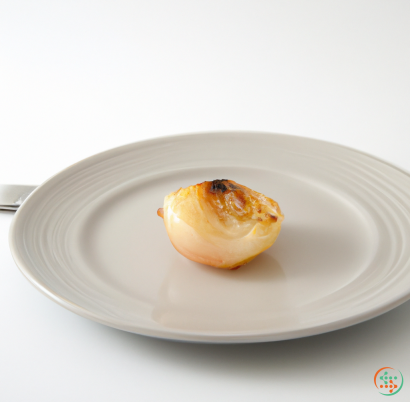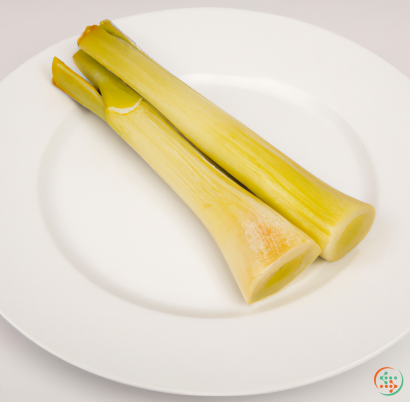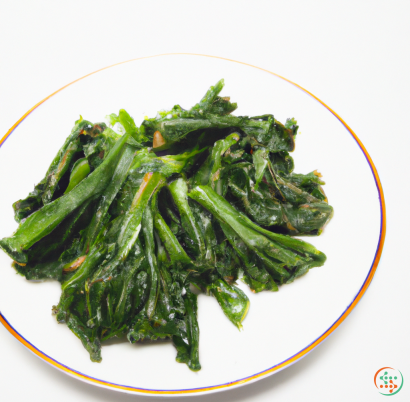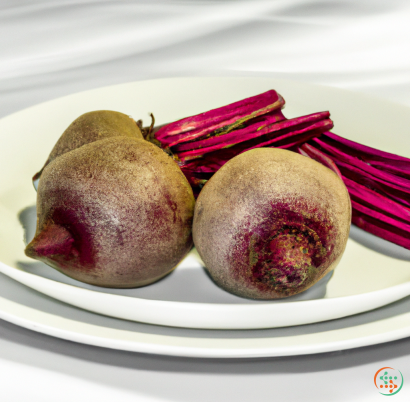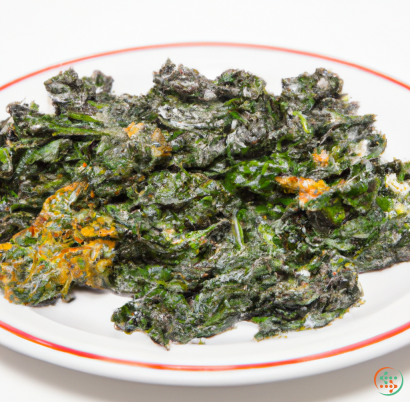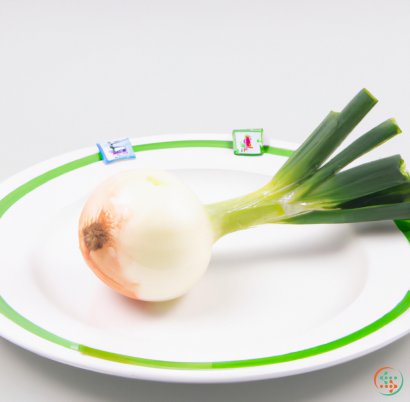Endive
Though the endive, an unassuming and often overlooked member of the vegetable family, is not the most talked about, it is slowly and steadily finding its rightful place in the culinary world. The endive is a bright, vibrant and crunchy green vegetable appreciated for its unique taste, high nutrient content and beneficial health properties.
Origins and History
The endive is a member of the Chicorium genus, a family of flowering plants. It is related to both endive and radicchio, and is considered a type of wild lettuce. Despite its close relation, the endive boasts a unique flavor that sets it apart from other ranges.
The origin of the endive can be traced back to Northeast France, where the vegetable was first grown, cultivated and consumed in the 1600s. Later, in the 1700s, cultivation of the endive expanded to the Netherlands, and eventually to Germany, Scandinavia, England and the United States.
Types
There are two main types of endive: curly endive and escarole. Both types of endive feature similar flavors, though escarole is slightly less bitter tasting than curly endive.
Curly endive, or frisée, has bright, ruffled leaves that immediately attract the eye. There is a sweet, nutty taste to this variety, making it a particularly popular choice among chefs and home cooks alike.
Escarole, known as broad-leaf endive, looks like a cross between a lettuce and a cabbage. This variety has broad, dark-green leaves with lighter-colored ribbing along the leaves’ veining. Escarole has a slightly bitter taste, though not as bitter as curly endive.
Nutritional content
Endive is highly nutritious and provides a variety of benefits. One cup of endive contains a rich concentration of vitamins, minerals, and other healing compounds. Endive is rich in Vitamin K and A, and provides your body with beneficial fiber and folate.
In addition, endive contains antioxidants such as lutein and zeaxanthin, which are beneficial in protecting against UV radiation and macular degeneration. Endive is also a source of prebiotics, which are beneficial to your digestive system.
Uses
Endive can be a welcome addition to salads, sautéed dishes, soups, and more. Raw endive is especially enjoyable, providing a unique and delicious crunch when added to salads and other dishes.
The endive can also be used in different types of cuisine, whether French, Italian or Asian. Braised endive is a popular Italian dish, while pickled endive is popular in other parts of Europe. Endive also works well in curries, as a side dish, or in sandwiches.
Benefits
The endive is highly beneficial to your health. Endive provides essential nutrients to your diet, aiding with weight loss, lowering cholesterol, improving digestion, and preventing blood clots that can lead to heart attack or stroke.
The high concentration of Vitamin K and A found in endive is beneficial for maintaining healthy bones, teeth, and skin. The lutein and zeaxanthin in endive is especially beneficial for eye health, as it helps protect your eyes from macular degeneration and UV radiation.
Conclusion
With its unique flavor and highly nutritious content, the endive is slowly but surely gaining recognition for its culinary and health benefits. Whether served raw, pickled, sautéed, in a soup, or even in a curry, the endive is an incredibly versatile vegetable, and its benefits to our health and wellbeing make it especially worth adding to our diets.
Endive: From Seeding to Savoring
Endive, known for its slightly bitter flavor and crunchy texture, is a unique and versatile vegetable that can be enjoyed in a number of different dishes. The journey from seed to the dinner plate is quite the adventure, one that starts in the soil and involves multiple steps along the way. Before you can dive into endive’s unique flavor profile, you first have to understand how it is cultivated, harvested, and transported from the field to the grocery store. This blog post will chronicle the journey from endive seed to savoring that first delicious bite.
Seeding
Endive seeds are sown between March and June in well-drained soil that has previously been prepared with compost and ample amounts of nitrogen. A crawl drill is usually used to ensure that the seeds get planted correctly in the soil. During this step, farmers take care to choose shallow and narrow rows to ensure that the plants will have enough room to develop. Once the seeds have been sown, they need to be covered with soil and watered to germinate.
Germination and Growing
After the seeds have been sown, they need a steady, warm temperature to sprout. This warm environment encourages stem growth and the development of shallow root systems. Soil temperature plays an important role in endive seed germination and is typically maintained at around 95 degrees Fahrenheit for optimal growth. After about seven days, small endive seedlings will emerge.
The next step in the journey is the vegetative stage. Eventually, the endive’s stems will become longer and thicker, and the first true leaves will appear. At this point, the endive plants are thinned to ensure good spacing, which helps to optimize nutrition consumption and prevents overcrowding. If the spacing is too close, the crops won’t get enough light, water, or nutrients from the soil. On the other hand, having too much space between endive plants can lead to weed infestation and water evaporation problems.
The vegetative stage will take about two months, with the endive plants getting around 12 hours of sunlight each day. While the endive plants are growing, farmers will fertilize, water, and weed to enhance growth and prepare for harvesting.
Harvesting
When the endive heads reach the desired size and shape, the plants are ready to be harvested. Generally, endive plants are harvested when their heads are firm and compact, and have a good green color. A sharp and sturdy knife is used to cut the heads, which are then carefully handled to avoid damaging the leaves.
Since endive is a winter crop, it is usually grown in coldframe structures, which are used to farm in the cooler months but still allow the endive plant exposure to the sun. This phase is important, because doing so maximizes nutritional content and helps the heads become more compact. Once the heads have been harvested, they are usually stored in a cool place to ensure freshness and maximum shelf life.
Transportation
Once the endive heads have been harvested and sorted, the next step is transporting them to the grocery store. To get to their destination, the endive is typically put in airtight boxes that keep the heads from drying out during transport. These boxes can be opened during transport to inspect the endive heads and check for quality, making sure that only the best and freshest heads of endive make it to their final destination. It is also important to monitor the temperature of the truck or car that is transporting the endive – if it is too warm, the heads may start to wilt.
Savor the Flavor
After the endive has traveled from the farm to the grocery store, it’s finally time to savor its flavor. Most people enjoy endive raw in salads, as it retains its crunchy texture, but it can also be sautéed, stewed, or even grilled. Endive’s mildly bitter flavor pairs well with creamy cheeses and a variety of fruits and vegetables – like apples, pears, carrots, and tomatoes – and its long harvest window (from March to June) makes it a welcome addition in any kitchen.
Conclusion
Endive is an amazing vegetable that has stood the test of time, with roots that can be traced back to the Ancient Romans. From seeding to savoring, endive’s journey from field to table is one that is full of care, attention, and flavor. Whether you’re adding it to your salad or roasting it for a delicious side dish, endive is sure to bring an exciting burst of flavor to any dish.
| Vitamin A | 0.108 mg | |
| Beta-Carotene | 0.0013 grams | |
| Vitamin E | 0.44 mg | |
| Vitamin K | 0.231 mg | |
| Vitamin C | 0.0065 grams | |
| Vitamin B1 | 0.08 mg | |
| Vitamin B2 | 0.08 mg | |
| Vitamin B3 | 0.4 mg | |
| Vitamin B4 | 0.0168 grams | |
| Vitamin B5 | 0.9 mg | |
| Vitamin B6 | 0.02 mg | |
| Vitamin B9 | 0.142 mg |
| Calcium | 0.052 grams |
Daily Value 1.3 g
|
| Iron | 0.83 mg |
Daily Value 0.018 g
|
| Magnesium | 0.015 grams |
Daily Value 0.4 g
|
| Phosphorus | 0.028 grams |
Daily Value 1.25 g
|
| Potassium | 0.314 grams |
Daily Value 4.7 g
|
| Sodium | 0.022 grams |
Daily Value 2.3 g
|
| Zinc | 0.79 mg |
Daily Value 0.011 g
|
| Copper | 0.1 mg |
Daily Value 0.9 mg
|
| Manganese | 0.42 mg |
Daily Value 0.0023 g
|
| Selenium | 0.2 ug |
Daily Value 0.055 mg
|
| Tryptophan | 0.005 grams | |
| Threonine | 0.05 grams | |
| Isoleucine | 0.072 grams | |
| Leucine | 0.098 grams | |
| Lysine | 0.063 grams | |
| Methionine | 0.014 grams | |
| Cystine | 0.01 grams | |
| Phenylalanine | 0.053 grams | |
| Tyrosine | 0.04 grams | |
| Valine | 0.063 grams | |
| Arginine | 0.062 grams | |
| Histidine | 0.023 grams | |
| Alanine | 0.062 grams | |
| Aspartic Acid | 0.13 grams | |
| Glutamic Acid | 0.166 grams | |
| Glycine | 0.058 grams | |
| Proline | 0.059 grams | |
| Serine | 0.049 grams |
| Total Sugars | 0.3 grams |
per 100g
|
| Palmitic acid (16:0) | 0.04 grams |
|
| Total Saturated fatty acids: | 0.04 g | |
| Linolenic acid (18:3) | 0.01 grams |
|
| Linoleic acid (18:2) | 0.08 grams |
|
| Total Polyunsaturated fatty acids: | 0.09 g | |

